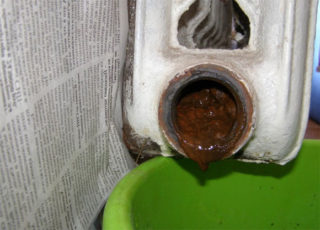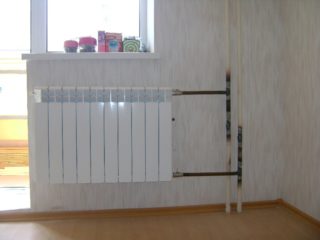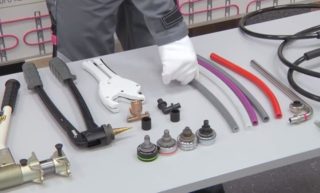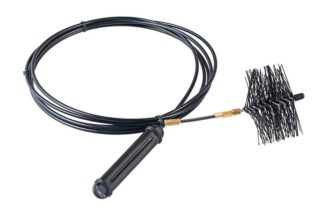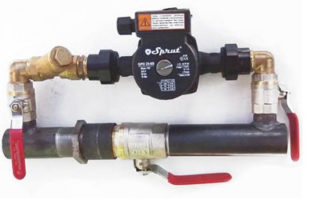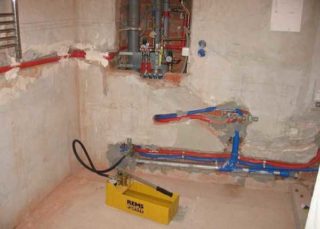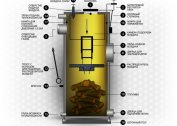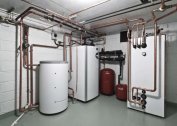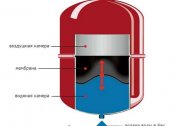Repairing a heating system is an expensive, complicated, but necessary procedure. It must be carried out regularly, with a certain frequency, both in a city apartment and in private real estate. If you do not pay attention to this design, over time it will begin to malfunction until it comes to an emergency state. The drop in pressure and temperature is just the beginning. The most sad consequences are manifested in leaks and breakthroughs of the highway. This is dangerous to health and is fraught with large material costs. The amount of repair of the heating system is determined by its age, degree of wear and damage. Based on the diagnosis, a decision is made on local or capital intervention.
Types of repairs

The specifics of repairing a heating system in a private and multi-apartment building differs in many respects. First of all, this is the size of the structure and property rights. Then, the number of auxiliary and control devices is taken into account. The owner of a summer house or a country mansion at any time can stop the system and perform routine maintenance with his own hands, regardless of the deadlines. If it is required to repair heating in an apartment in a high-rise building, these actions must be coordinated with the board and the management company. Moreover, in most cases, only specialists can carry out system maintenance.
Scheduled repair
Planned work on the heating system is carried out in accordance with the schedule. The document is developed taking into account the material from which the communications, the chemical composition and purity of the coolant, the intensity of operation of the system are collected. Depending on the factors, scheduled repairs are carried out at intervals of 10-20 years.
This event may include such works:
- minor repairs of electric heating boilers;
- restoration of cast iron batteries;
- elimination of leaks;
- replacement of gaskets, couplings, taps and valves;
- pipe flushing;
- radiator cleaning.
Regulatory procedures are carried out after the end of the heating season so as not to cause discomfort to residents of the building. In cold weather, the system can only be stopped in case of mass malfunctions or the occurrence of emergency conditions.
Scheduled repairs can be carried out by regular housekeeping plumbers, but inspection and commissioning work is carried out by specialists of the energy company.
Overhaul
Major repairs are carried out as necessary, sometimes 40-50 years after the building is put into operation. Frequency is determined by the degree of wear of heating appliances, equipment and communications. This measure involves a partial or complete replacement of circuit parts, in some cases with a change in the design wiring diagram.
In the process, heating radiators are repaired or modern productive products are installed.
In addition, the following parts of the system can be replaced:
- common risers;
- separate emergency sections;
- valves
- control sensors;
- centrifugal pumps;
- expansion tanks.
Repair of electric boilers is carried out if there is a deterioration in the heating of the premises.Products have a complex device, so it is advisable to invite specialists to restore them.
DIY equipment and materials
Having made the decision to repair the heating with your own hands, you need to correctly and competently prepare for this event.
To work, you need such tools:
- grinder, puncher, soldering iron for plastic pipes, screwdriver, welding machine;
- roulette, square, level;
- plumbing pliers, adjustable gas wrench, core;
- devices for cutting internal and external threads;
- hammer;
- cable with a brush;
- ladder;
- marker.
The list may be larger or smaller depending on the type and scope of the upcoming repair. To protect the skin, organs of vision and breathing, it is recommended to use glasses, gloves and a gauze bandage.
List of required materials:
- pipe clamps;
- sandpaper;
- cold welding;
- tow;
- FUM tape;
- acetone;
- rags.
Since part of the water in the system remains after draining, it is necessary to prepare buckets and basins for emptying radiators, rags to collect spilled liquid from the floor.
Heating Repair Instructions
Without interfering with the general heating system, the owner of the apartment can independently carry out a number of measures to improve its operation within his property.
Begin by repairing cast iron radiators. These products have a large volume, which is why the circulation speed in them is weak, and this leads to the formation of sediment. Over time, it becomes denser, deposited in the ribs, and blocks the channels. Change batteries faster, but it's pretty expensive.
Restoration of old cast-iron radiators is carried out in the following sequence:
- If there are cranes in front of them, put them in a closed position.
- Unscrew connecting nut. As a rule, this fails immediately. Strong heat is used to loosen the joint.
- Remove the battery from the brackets, drain the water from it.
- Perform initial mechanical cleaning from the inside. After removing plaque, seal the holes with plugs and pour 10% citric acid solution inside.
- Soak for 30-40 minutes, drain the liquid, check the result. Repeat if necessary.
- Remove old paint from the outside. To do this, use a wash, a manual sandblasting machine or a grinder with a metal brush.
- If intersectional gaskets leak, replace them.
- Paint the radiator with acrylic heat-resistant paint, wait for it to dry completely.
- Hang the battery in place, connect to the pipes.
While the radiator is standing with acid and dries after staining, you can do the strapping. Horizontal spans are often clogged with dirt and limescale. It is easy to get rid of deposits. To do this, take the cable with the brush, insert it into the pipe and start moving it until the hole in the riser is reached. To achieve a better effect and speed up cleaning, a household detergent with an abrasive is added to the brush. The achieved result is checked visually using a flashlight to illuminate.
Quite often, due to corrosion or poor-quality welding, leaks occur in pipes and cases of radiators. These phenomena can not be ignored, since the holes will constantly increase.
In such cases, proceed as follows:
- Block the water, drain the problem area. Sometimes you have to temporarily dismantle it.
- Peel the paint around the hole to the metal. Expand the gap with a thin drill. Check that no rust remains. Degrease the material with acetone.
- Close up a hole. To do this, you can use mastic or rivet with a silicone washer.If there is welding, it is better to make a metal patch.
If there is no sealant or rivet under your hands, the hole is closed with a clamp, under which dense rubber is laid. This method is unaesthetic, but before the end of the heating season the clamp will do its job. After draining the water from the system, you need to carry out a quality repair.
Improving room heating
Quite often, property owners have to face an insufficient level of heating in severe frosts.
You can increase the efficiency of the heating system by installing such products:
- Centrifugal pump. It must be installed at the outlet by tapping into the feed.
- Copper pipes with better heat dissipation.
- Electric or water floor heating.
In some cases, you should change the strapping scheme, using the two-pipe option.
Stages of repair of heating systems
Starting to repair the heating system, you need to have a clear, thoughtful and technically sound plan.
The event itself consists of the following stages:
- Blocking the supply and draining of water from the system.
- Checking the condition of the circuit by external inspection of devices, communications and joints.
- Dismantling radiators and obsolete pipes.
- Electric boiler repair.
- Settlements and the purchase of new materials.
- Drawing a marking.
- Installing new batteries.
- Installation of a new strapping, connection and circuit closure.
In conclusion, the health of the system is checked. This is done independently or with the assistance of specialists.
Hydraulic test
Hydraulic tests of the heating system (pressure testing) are planned and control measures designed to verify the reliability of heat exchange equipment. This action is carried out in order to detect potentially dangerous in terms of leaks nodes, equipment and communication areas. Hydraulic tests must be performed before the start of the heating season, after the completion of a scheduled or major repair of the system.
During the test, water is pumped into the pipes, air is bleed. Then, using a pump with a pressure gauge, a pressure of 2-6 atm is created in the circuit, which is higher than the nominal pressure. Symptoms are leaks and drops of water at the joints. After elimination of defects the test is repeated. A prerequisite is the use of hot water, the temperature of which corresponds to or higher than the calculated one. Thermal check shows the true readiness of the circuit for operation.
